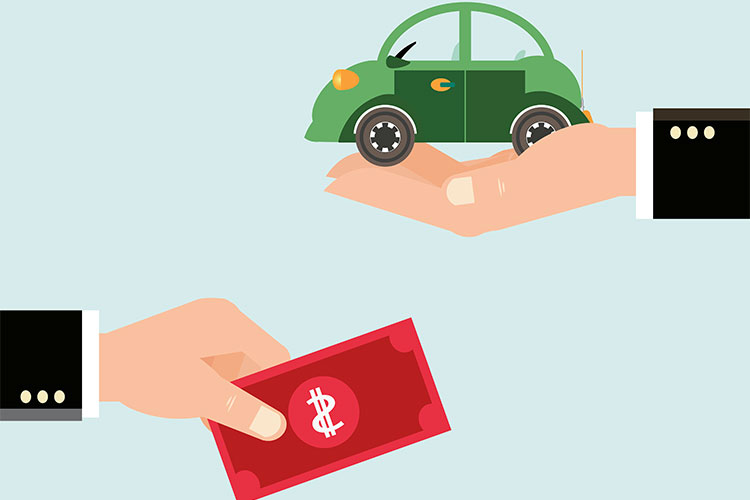Clean vehicle rebates benefit wealthy, white Californians, study finds
Researchers cite complex reasons for why whiter, wealthier Californians benefit most from the state's program offering rebates for low-emission vehicles.

November 7, 2016
Have you applied for and received a rebate from California’s clean vehicle incentive program? If so, odds are you live in a high-income neighborhood and not one with a majority Hispanic or African American population, according to a study in the latest issue of the Transportation Research Record.
Researchers Dana Rubin and Evelyne St-Louis, two recent graduates of UC Berkeley’s master’s program in city and regional planning, present in the journal their analysis of 98,901 rebates issued to Californians buying or leasing low-emission vehicles from the inception of the Clean Vehicle Rebate Project in 2010 through March 2015.

Changes in rebate rules are taking place this month. (Photo by Marcin Winchary, courtesy of Wikimedia.)
Rubin and St-Louis say that considering the high costs of fuel-efficient electric, plug-in hybrid electric and fuel cell vehicles, whose sticker prices start at around $20,000, it was not surprising to find that 83 percent of rebate recipients in the period studied reported yearly incomes of more than $100,000.
Income, race-ethnicity and rebate distribution
While a state law passed in 2014 requires that 10 percent of CVRP funds be allocated to disadvantaged communities, Rubin and St-Louis found that residents of neighborhoods with a majority Hispanic or African American population are less likely to have applied for, and therefore be benefiting from, clean vehicle rebates, even when income is held constant. For example, as the share of Hispanics in census tracts increases by increments of 10 percent, the number of rebates decreases by 0.54 per thousand households.
“Even when income was accounted for, people of color were still less likely to be using those rebates,” says St-Louis.
“That’s perhaps the problem,” says St-Louis. “The CVRP program was funding households that could afford those vehicles anyway. These households may have been slightly incentivized by a rebate, but the marginal difference it could make to them is more narrow than for a lower- or middle-income household.”
Targeted marketing
There may be other reasons why communities of color aren’t receiving and benefiting from clean vehicle rebates, say Rubin and St-Louis.
“Nonparticipation by low-income people and people of color shows us that barriers prevent these groups from accessing CVRP subsidies. We can surmise that this is partially attributed to the auto industry targeting wealthier areas with marketing campaigns, and also because information and guidance about electric vehicles and subsidy programs is not distributed evenly across all populations,” St-Louis says.
“But if the most polluted communities cannot afford clean vehicles, even with government sponsorship, then the potential positive local benefits of this clean technology are missed out on by those who could gain most from them,” says Rubin.
Program adjusts income, rebate ruler
As of Nov. 1 2016, CVRP began instituting changes in its income requirements and rebate levels. Rebates for all types of eligible light-duty passenger vehicles increased by $500 for a total of $2,000 more for each rebate, for a range of $3,500 to $7,000. To qualify for the increased rebates, applicants must have household incomes not more than 300 percent of the federal poverty level.
Residents will not be eligible for rebates if their gross annual income exceeds $150,000 for single tax filers, $204,000 for head of household filers and $300,000 for joint filers. However, the limits do not apply to fuel cell electric vehicles, which represent less than 1 percent of rebate applications.
St-Louis and Rubin say the adjustments are a first step to rectify the program’s imbalance in terms of income, race and ethnicity.
“We are relatively optimistic that it will make a difference, at least at the margins, for middle-income folks,” says St-Louis. “We need to reconcile the actual impact of policy with principles of racial and class equity. More action needs to be taken in the policy sphere to expand the program to low-income folks, but marketing and advertising strategies are also necessary.”
The CVRP aims to encourage California residents to move from driving more polluting vehicles toward zero-emissions cars, and to help the state cut its greenhouse gas emissions to 1990 levels by the year 2020, as mandated by the Global Warming Solutions Act of 2006.
California is not alone in the clean vehicle rebate field. Other states and countries also have adopted incentive programs to boost the use of clean vehicles.